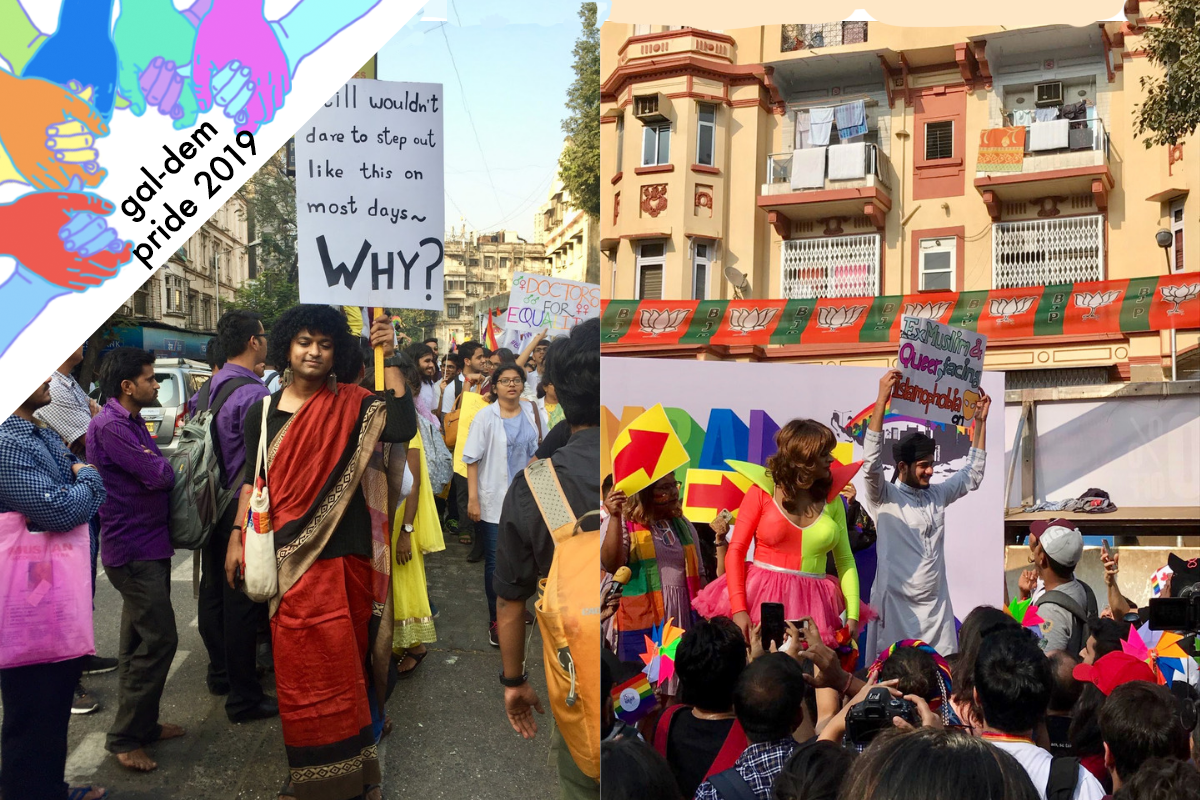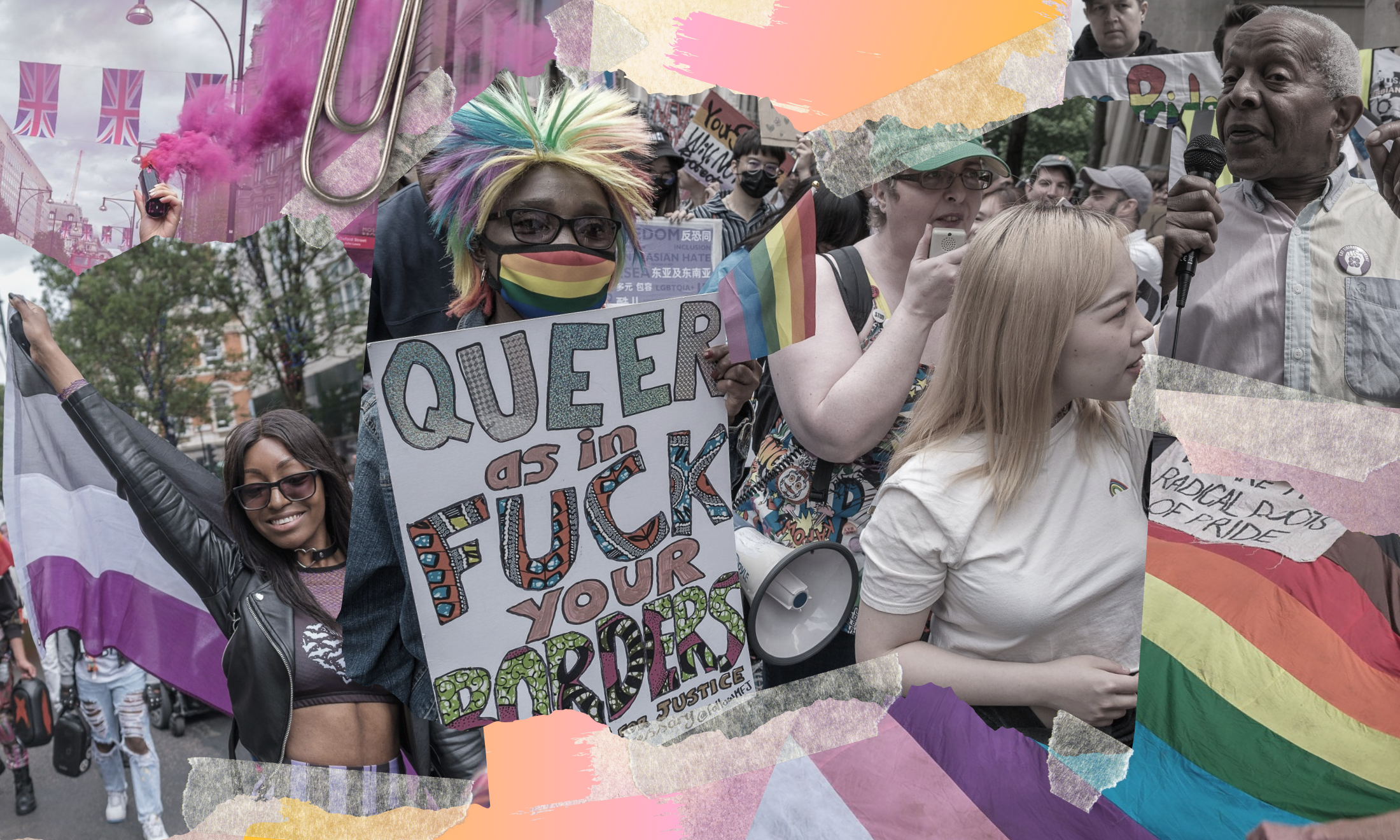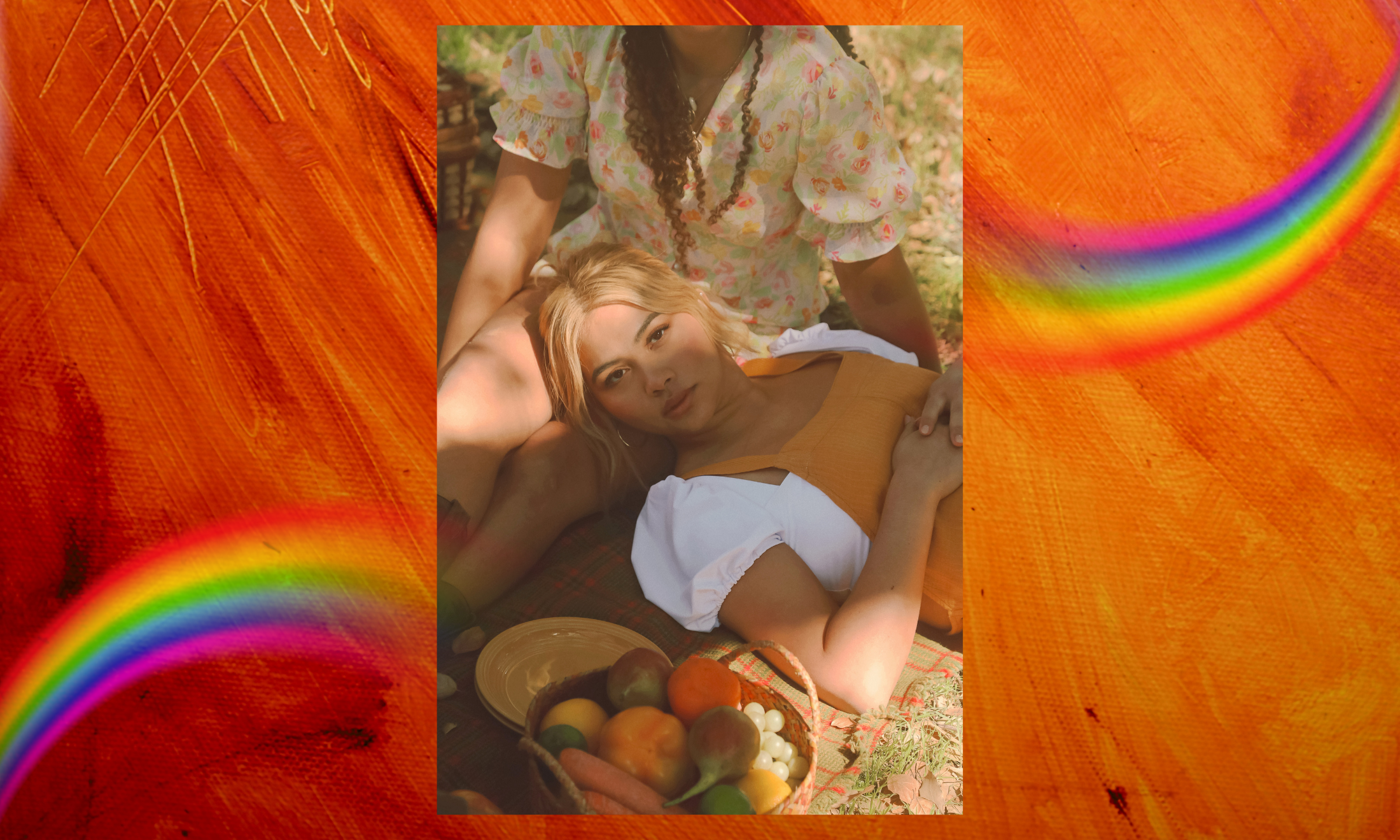
Photography by Tish Sanghera
A part of the gal-dem Pride series
“Ten years ago 90% of people at Pride wore masks to cover their faces,” says Mahir Mahel, brushing strands of pink hair from his bearded face. “But look around you, today there is nobody doing that, people are enjoying themselves”.
Mahir is a regular at Mumbai’s annual Pride march, which took place in February last year. He told me that this year, almost six months after India’s Supreme Court struck down Section 377 – a colonial-era law banning homosexual acts – there was a different energy pulsating through the 20,000 strong crowd. He described it as a feeling that the community is finally “protected”, “energised” and “ready to fight” next for marriage equality, adoption rights and stronger anti-discrimination laws.
“In some ways, Mumbai’s Pride event is like any other, with its rainbow flags and riotous displays of joy and individual expression. At the same time, it retains a stronger sense of its purpose”
“History owes LGBTQ people an apology,” said one Judge in the unanimous ruling, which stated that the law violated the constitutional right to equality. Though prosecution was uncommon, Section 377 gave police the licence to harass, blackmail and assault members of the LGBTQI+ community, who Mahir now feels are more able to live without fear and interference in their sex lives.
The battle for equality has been long and fraught. The first petition challenging the law was filed in 2001 by The Naz Foundation, an NGO. In 2009 the Delhi High Court overturned the rule, only to be reinstated by the Supreme Court in 2013.
“That really pushed people back into the closet,” says Harish Iyer, an equal rights activist and one of India’s leading queer figures. “Families started applying even more pressure on their children to adhere to a heterosexual lifestyle”. He added that families are now more confident that the “law of the land” is behind them.
In some ways, Mumbai’s Pride event is like any other, with its rainbow flags and riotous displays of joy and individual expression. At the same time, it retains a stronger sense of its purpose: a march for Queer Azadi – or Queer Freedom – the event’s alternative name and a signal to the injustices the community still suffers.
“Mumbai is billed as India’s most “gay-friendly” city, but even here people’s experiences can differ widely”
Discrimination in the city’s competitive rental and labour markets, as well as gaps in India’s public health system pose a constant struggle for the LGBTQI+ community seeking to live openly and freely as themselves.
As with many aspects of life in India, caste, wealth, education and religion combine to create layers of privilege, determining the ease and comfort with which an individual can move through society. This year’s theme of #PrideForAll referenced this reality, promoting the community’s diverse social identities and the distinct support different groups need. An upper-caste, metropolitan narrative has so far dominated the movement, but last year an exhibition, ‘Queeristan’, was showcased in Mumbai and began highlighting the lived experiences of under-represented Dalit, Muslim, disabled and non-urban individuals.
“Queerness is often seen as homogenous, which isn’t true,” said Saniyha Sheikh, the exhibition’s curator in an interview with Livemint. “Just because we won the victory against Section 377 doesn’t mean we don’t amplify these voices anymore.”
Mumbai is billed as India’s most “gay-friendly” city, but even here people’s experiences can differ widely. Rohan Pujari, 32, attended the Pride march with his mother and is a vocal campaigner for the Humsafar Trust, a well-known LGBTQI+ rights NGO. Nonetheless, Pujari still moderates his lifestyle at home in the suburbs. “It’s a ‘don’t ask, don’t tell’ type situation in areas like mine,” he explained. “While my neighbours may know who I am, they still don’t really understand what it means to be gay [nor would they] want to find out more.”
Pujari adds that “because I don’t act or look particularly feminine, people tell me I can’t be gay – that I must have a problem and should consult someone”. He notes that he sometimes faces discrimination within his friendship circle: “Sometimes guys can be reluctant to accept a lift from me on the back of my motorbike. They’re scared that rumours will spread that we’re together or something”.
Since the Supreme Court judgment, the community has noticed subtle changes. A nascent gay culture (which had to retreat back into the shadows post the re-criminalisation event in 2013) is again emerging, businesses are vying for the “pink rupee” and a new generation feels they have the choice of never being in the closet at all.
On the day Section 377 was struck down, apps like Uber, Swiggy (a food-delivery company similar to Deliveroo) and Google added rainbow flags onto their user displays in public support of a marginalised community they feel it is important to get on side. LGBTQ+ friendly resorts, spas and club nights at the country’s top hotels are also starting to provide spaces for the community to be “out and proud”, whereas previously such options were limited.
Jnanasiddhy Bommisetty, 31, is a member of Rainbow Voices, India’s first gay choir. He emphasises the value of having more public spaces where he can be himself, equating them to “therapy”. “You had Whatsapp groups, online chat-rooms and gay club nights, but nothing really beyond these types of hook-up environments,” he said. With more visibility in the mainstream, a change in culture and ideas, Jnanasiddhy believes more such organisations will spring up, especially when people have real examples to emulate. “I think Rainbow Voices is quite unique – but that’s a bad thing actually! We want to see a choir in every city in India.”.
“Outside of the liberal echo chamber of cities like Mumbai, a large segment of the population still lives within rigid, social structures that uphold a hetero-normative lifestyle.”
Outside of the liberal echo chamber of cities like Mumbai, a large segment of the population still live within rigid, social structures that uphold a hetero-normative lifestyle. Homosexuality is sometimes viewed as a western import, or a purely urban phenomenon, both positions which the release of Ek Ladhki Ko Dekha Toh Aisa Laga a recent Bollywood movie set in small-town Punjab, has been praised for tackling. The traditional marriage institution holds a particularly strong position in the social fabric, and it is this, the forgoing of a religious wedding ceremony that is often one of the main points of conflict between parents and LGBTQI+ children in India.
“Right now the government has the means to effect change, all that is lacking is the will,” said Iyer, the activist. “They could have ensured that the [anti-discrimination] message reached every village in the country, but they’re not interested in that.”
Now with the passing of a controversial Transgender Bill last December, one which asks individuals to self-identify as one gender and appear in front of a screening committee, activists are concerned at the lack of awareness about the community’s needs by policymakers and those in power. “It’s a very premature understanding of trans people, and this talk of them as representing gods and goddesses is unhelpful,” said Iyer referencing the traditional and symbolic position of hijras or transgender people in Indian society. “Instead of taking the route of gods and goddesses, they need to recognize the community as citizens first.”.
In a country of 1.3 billion people, speaking 270 different languages and practising all six of the world’s major religions, a universal and rapid change in attitudes will take time. While the Supreme Court’s progressive ruling on homosexuality is undoubtedly welcome, ending a two-decade-long campaign, it’s only with a significant shift in mindset amongst the country’s social, legal and political institutions that acceptance of the LGBTQI+ community will be fully accomplished.









